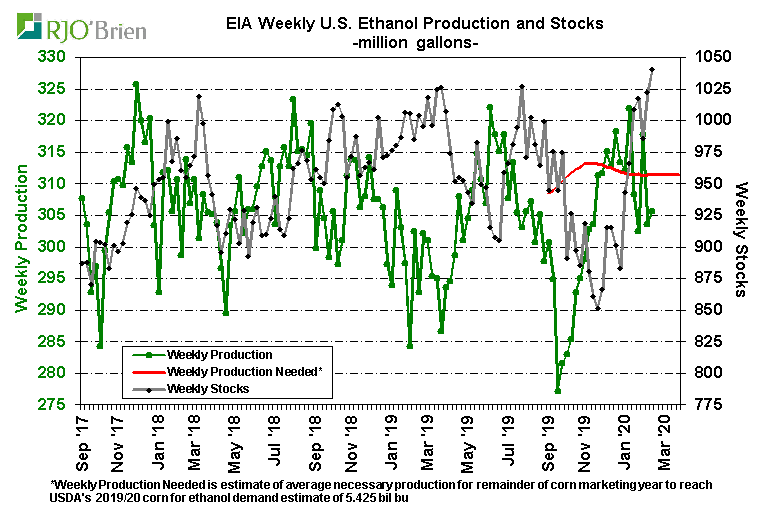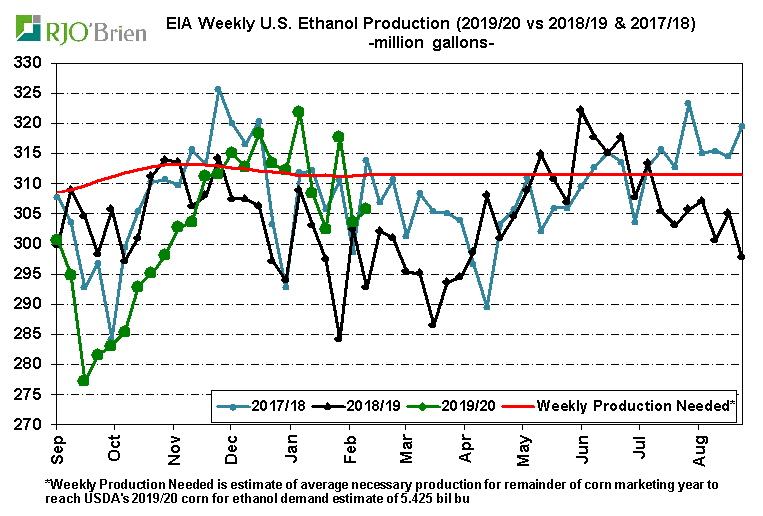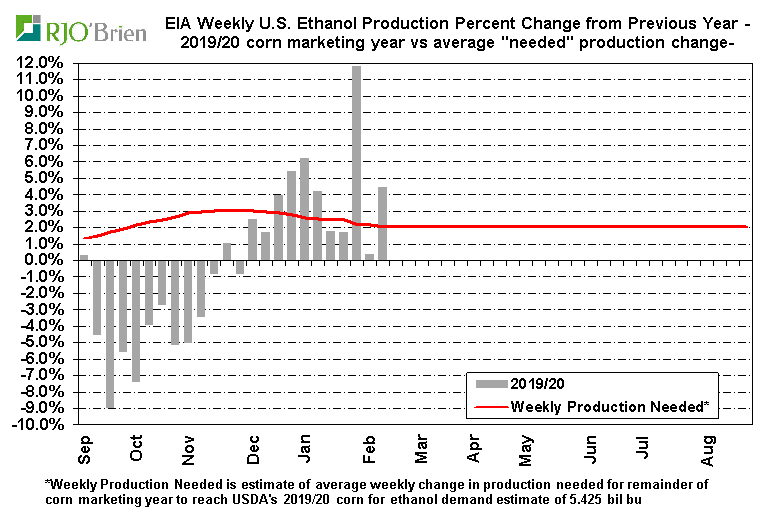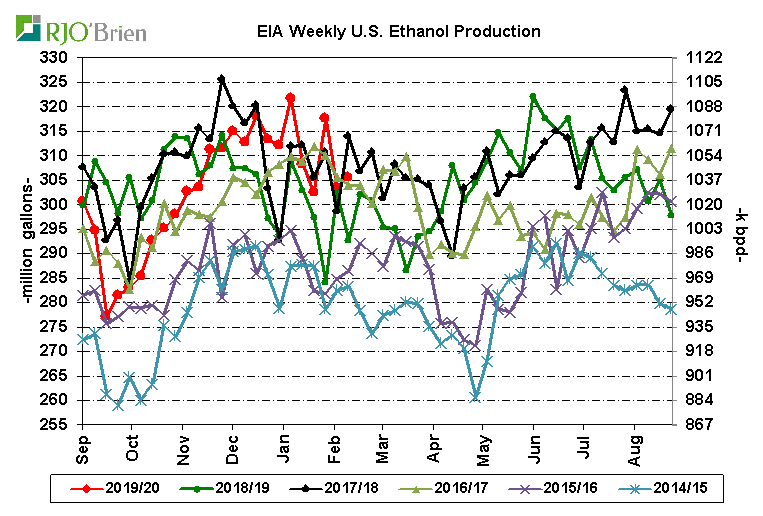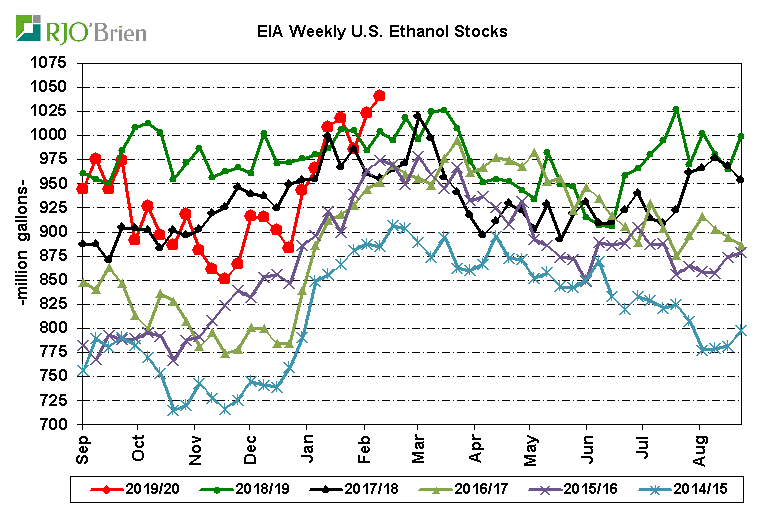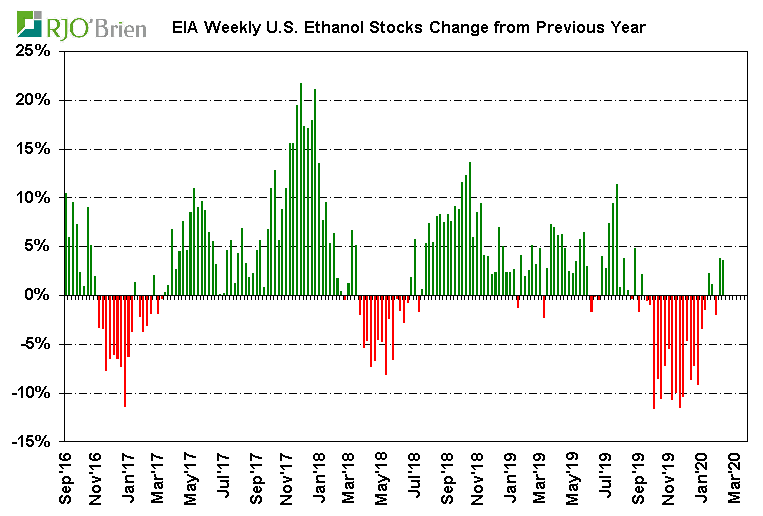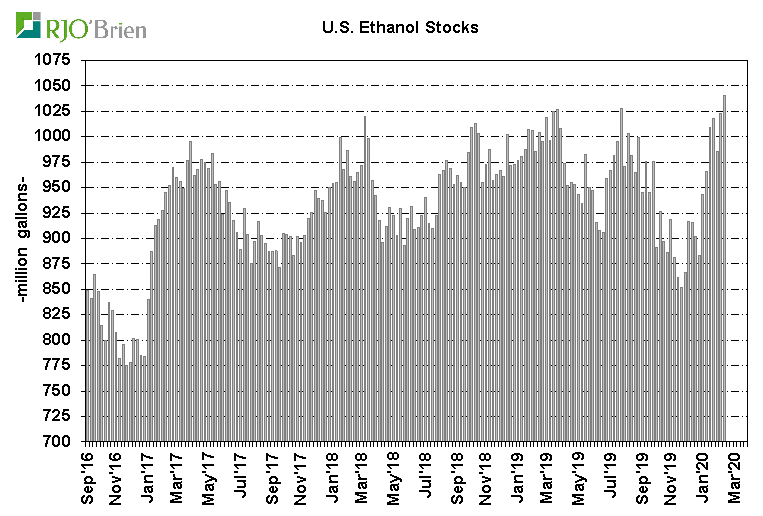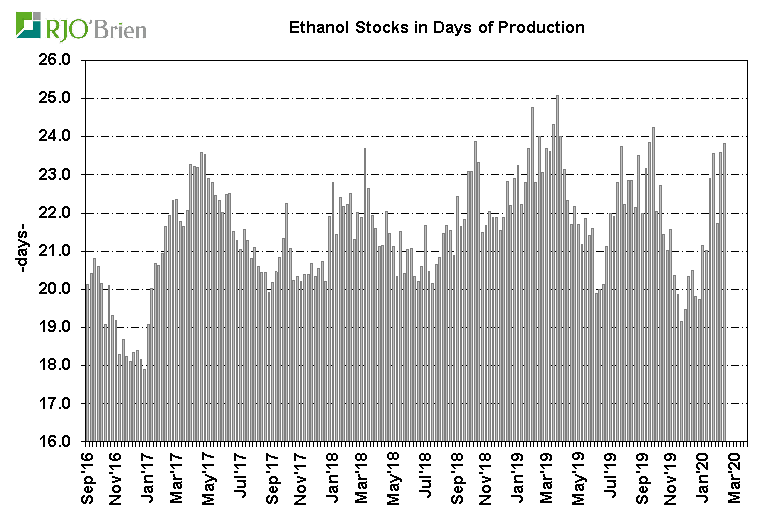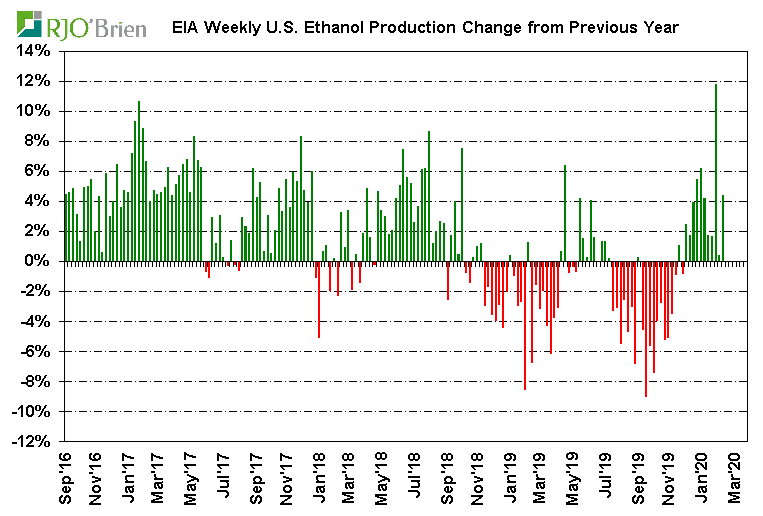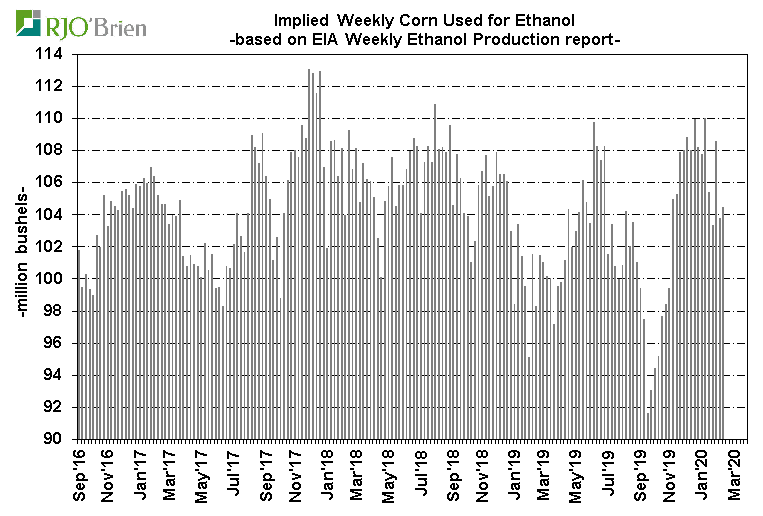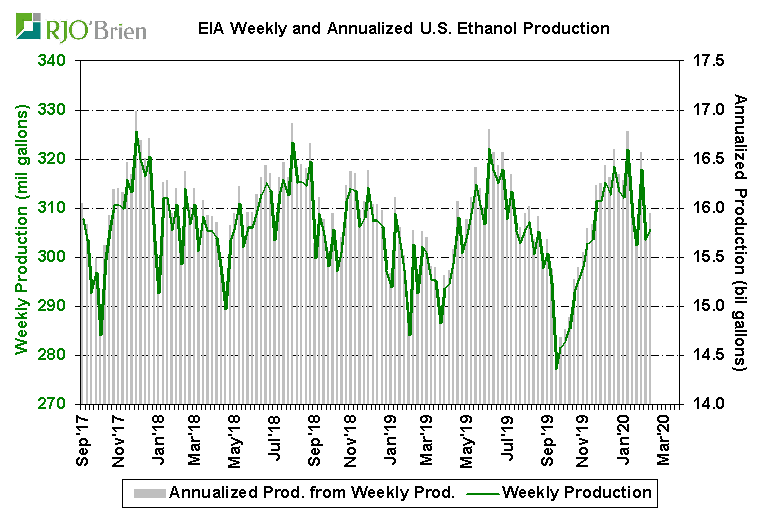-Weekly ethanol production rises slightly
-Ethanol stocks jump to new all-time high
U.S. ethanol production, for the week ended 2/14/20, rose modestly to 1.040 million barrels/day (306 million gallons/week) from 1.033 mbpd (304 mil gal/week) the week prior and was 4.4% above last year’s same-week production of 996 kbpd (293 mil gal/week), more than maintaining the pace needed in order to reach the USDA’s 2019/20 corn for ethanol usage estimate of 5.425 billion bushels. Since early December, U.S. ethanol production has run at an average +4.0% year-over-year pace, while we estimate ethanol production will need to average roughly 2.1% above year ago levels through the end of August for the USDA’s corn demand estimate to be reached. Over the next eight weeks last year, ethanol production averaged just 1.006 mbpd, well below the 1.046 mbpd in which production has averaged over the last four weeks, so even a continued steady production pace will keep the USDA’s corn for ethanol usage estimate looking solid during the coming two months.
The bigger issue, though, continues to be the ethanol stocks situation and the overall weak margin structure which could/should prompt a reduction in production rates at some point. U.S. ethanol stocks jumped to 1.041 billion gallons (24.781 million barrels) last week from 1.023 bil gallons (24.358 mil barrels) the week prior, hitting a new all-time high in exceeding previous high from late July 2019 of 1.028 billion bushels (24.468 mil barrels). Ethanol stocks are 3.6% (37 million gallons) above last year as of mid-February and have risen 157 million gallons (17.8%) over the last seven weeks. During the same 7-week period last year, ethanol stocks rose just 3.2%. Gasoline demand last week rose modestly to 8.918 mbpd from 8.722 mbpd the previous week and was 1.3% above last year’s same-week demand of 8.800 mbpd. Through the first seven weeks of 2020, U.S. gasoline demand is running 2.5% below last year, on average, according to the EIA’s weekly data, but the last two weeks have reflected year-over-year increases.
